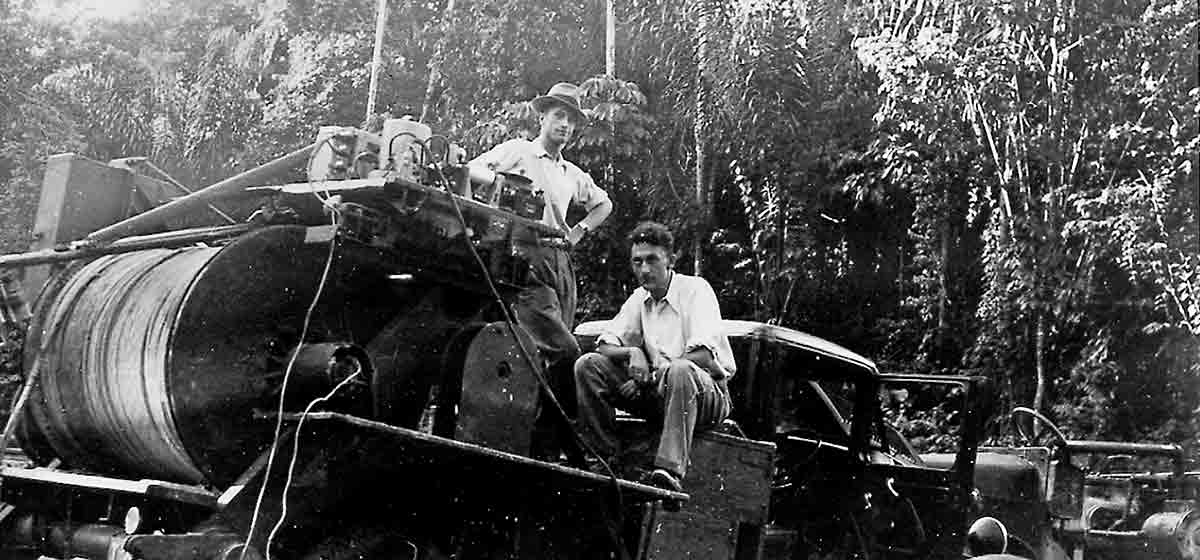1930s
A global innovator takes shape

Logging techniques took a leap forward with the introduction of the continuous-recording hand recorder in 1930, which enabled a continuous log of formation resistivity to be plotted while the sonde was withdrawn steadily from the hole. This was a big improvement on the preexisting point-by-point system and enabled an engineer to log 1,000 feet in an hour under good conditions.
In 1931, this was followed by another breakthrough, the spontaneous potential (SP) log. Measuring the SP that is naturally produced by the borehole mud at the boundaries of permeable beds provided a way to distinguish permeable rock capable of holding a reservoir from impermeable rock through which it was difficult for fluids to flow.
In February 1932, Conrad and Marcel Schlumberger presented the first comprehensive description of the principles of well logging to the American Institute of Mining and Metallurgical Engineers in New York. Their paper was titled, "Electrical Coring: A Method of Determining Bottom-Hole Data by Electrical Measurements."
By the mid-1930s, electrical coring, or electric logging, had truly arrived. Pros teams went to the main oil-producing countries of the day—Romania, Venezuela, Trinidad, Dutch East Indies, and the US. The number of teams grew from 8 in 1933 to more than 140 just before World War II.
Pros, meanwhile, was growing into three international companies that ultimately became the global organization of SLB today. The founding in 1934 of the Schlumberger Well Surveying Corporation (covering North America) in Houston, Texas reflected the growing importance of the US market, with more than half of the Pros teams now working in the US.
Conrad Schlumberger died in May 1936 in Stockholm while returning from a business trip to the Soviet Union. He lived long enough to see the establishment of the global foundations of the company that bears his name.
| Year | Event |
| 1930 | Introduces continuous-recording hand recorder, enabling plotting of a continuous log of information |
| 1931 | SP log |
| 1932 | Conrad and Marcel Schlumberger present the first comprehensive description of the principles of well logging |
| 1934 | Founds Schlumberger Well Surveying Corporation (covering North America) First well log in Ecuador is performed |
| 1935 | Develops single-galvanometer automatic recorder for logging in the field First well log in Brunei Darussalem is performed |
| 1936 | Conrad Schlumberger dies in Stockholm while returning from business in the Soviet Union Introduces the sample taker tool |
| 1939 | First well log in Kuwait is performed |
